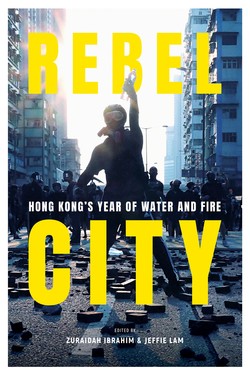Читать книгу Rebel City - South China Morning Post Team - Страница 44
На сайте Литреса книга снята с продажи.
Self-restraint mechanism
ОглавлениеFew cared to blame the protesters, whether quietly or openly. But the protesters did fret about their standing. Online data showed LIHKG, the Reddit-like site which became the protesters’ virtual command center, recorded the biggest bump in traffic on weekends, followed by another spike on Mondays, according to Cheng. The chatter showed protesters critiquing their actions after each weekend.
In mid-August, they apologized and promised to reflect on their strategy, after causing massive disruption at the city’s airport, leading to nearly 1,000 suspended flights and thousands of grounded travelers. “Being stranded for three days, canceled flights and forced changes of itinerary are not what you deserve, nor is this what we initially aspired to do,” implored a statement by a group of anonymous protesters. “For the sake of the youngsters’ pursuit of freedom, democracy and human rights, please understand our difficulties.”
On October 4, hours after masked radicals went on a rampage, trashing railway stations and vandalizing a large number of shops and banks perceived to be Beijing-friendly in response to the newly introduced mask ban, several posts popped up on LIHKG questioning the wisdom of such moves. Someone soon offered new “guidelines” reminding comrades to trash only businesses run by gangsters, as well as government offices and offices of pro-Beijing politicians. Shops and restaurants owned by Beijing-friendly businessmen should only be “decorated” with graffiti.
“We are largely fighting for democracy and freedom, but what we are doing now appears to be attacking those who are not with us,” a user wrote on LIHKG. Another said: “Only dictators are intolerant of dissenting views. What’s the difference between the Communist Party and us, if we ‘renovate’ the stores just because their owners have a different point of view?”
Others called for the violence to be scaled back to retain international support, particularly from the United States, whose lawmakers were then planning to pass a bill that could impose diplomatic action and economic sanctions against Hong Kong supposedly to further democracy in the city.
Observers close to the ground said there was a dynamic collective restraint mechanism within the movement, which helped preserve the unity between radicals and peaceful supporters. “It’s like a rubber band where they learn from each other. The radicals could lead the moderates to take a step further, while the moderates could also pull back the radicals each time they went too far,” said Cheng.
But the self-restraint mechanism had weakened by October and November. A 57-year-old construction worker who confronted radicals vandalizing facilities at Ma On Shan MTR station on November 11 was torched. He suffered second-degree burns to his chest and arms, as well as head trauma. Protesters were out on the streets that day to paralyze the city’s traffic after the death of student Chow Tsz-lok, who succumbed to his injuries days after he fell mysteriously from a car park near the site of a police dispersal operation in Tseung Kwan O.
By November, protesters had lost sight of their “be water” strategy too. In their clashes at Polytechnic University to bring Hong Kong to a standstill by blocking an important harbor crossing, 1,000 of them found themselves kettled on campus after a day of heavy violence.
Human rights activist Johnson Yeung Ching-yin, former convenor of the pro-democracy umbrella group Civil Human Rights Front, believed the weakened self-restraint mechanism was due partly to hardcore members moving their online discussions to encrypted channels to ensure secrecy.
“In the beginning of the movement, protesters tended to make decisions via platforms such as LIHKG and Telegram. The chosen options were bound to be relatively mild if 100,000 had voted following deliberation and compromises,” said Yeung, 28. “But by October, protesters no longer relied on these popular platforms. They had formed their own groups for decision-making and by then no longer had to care about mainstream opinion.”
Yeung’s observation was corroborated by the shrinking number of posts on LIHKG from early November.
Another reason for the increasing radicalization was the change in the ranks of the frontliners, according to Cheng. “Some newcomers decided to join because their friends had been arrested or beaten. They are more emotionally driven,” he said. Compared with earlier frontliners, they were less tactical and organized in their methods.
Victoria Hui Tin-bor, associate professor in the political science department of the University of Notre Dame in the US, said spontaneous violence was the “worst downside” of any movement lacking clear leadership.
“Spontaneous violence is really common everywhere. People get angry. It takes training to maintain non-violent discipline,” she said, noting how the Occupy leaders had spent a year training its some 1,000 core supporters on non-violence. “But beyond the core, it is never easy to stop others from acting on impulse.”
